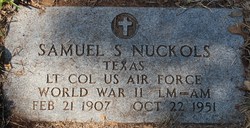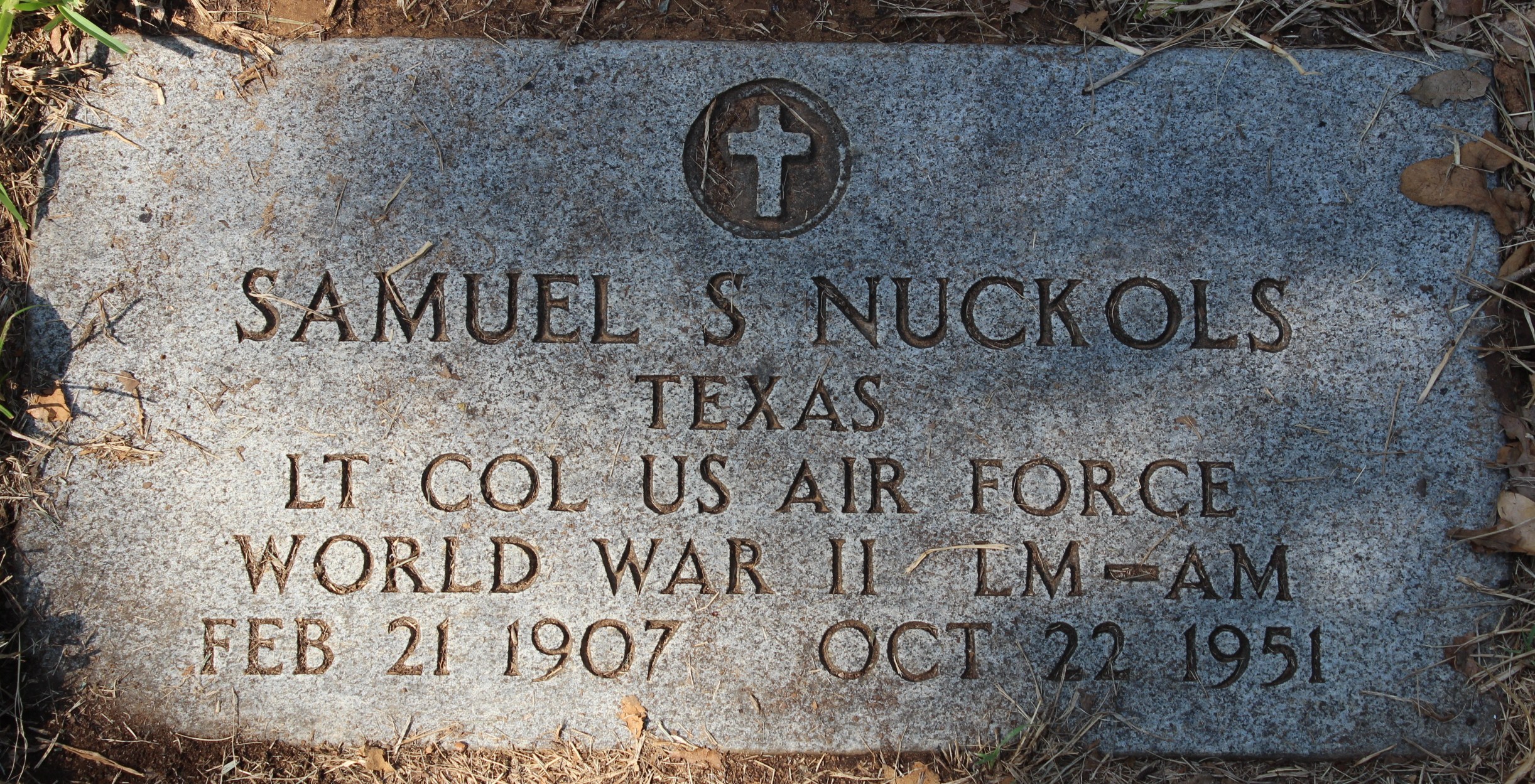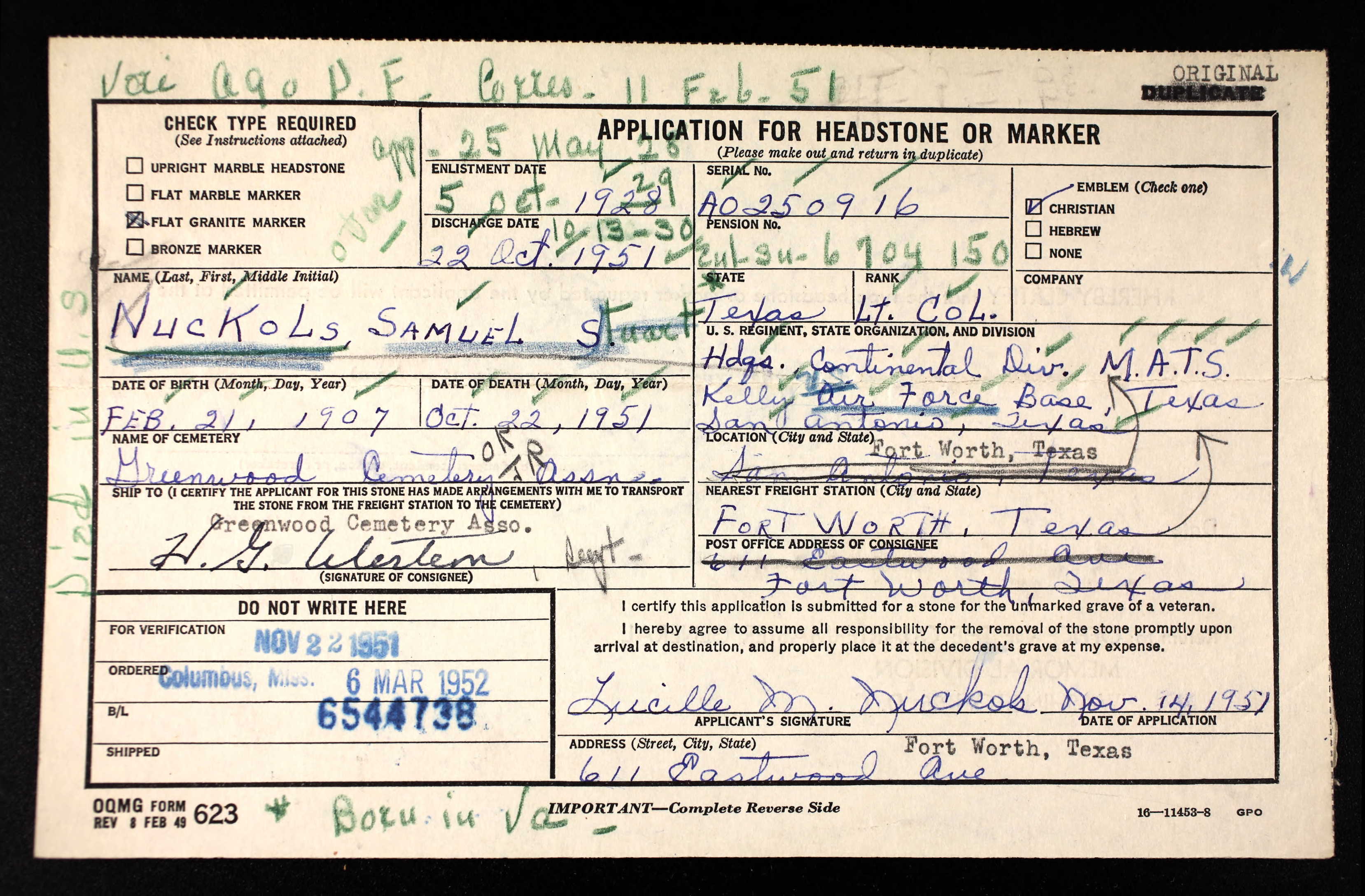Lt. Col. Samuel S. Nuckols, a very experienced person in this type of operation, was selected to command this special group. He was a graduate of the flying cadet school in 1932. Later in civilian life, he was Chief Pilot for the Western Division of American Airlines. As a reserve officer, he was called to active duty in the early days of the conflict. Before being selected to head the First Transport Squadron, he was chief of flight training at the Third Overseas Training School, located in Reno, Nevada. This school was located in the higher elevations of the Rocky Mountains. Its goal was to familiarize and train pilots for the various types of flying encountered in the China, Burma, and India Theaters, among others, especially "Hump" flying.One of the qualifications of the first pilots and most of the co-pilots of the First Air-Transport Squadron was to have successfully completed the course at this school.
The second C-97 crash in San Antonio happened at 4:36 p.m. on Oct. 22, 1951. As the plane took off, eyewitnesses saw it lift no more than 50 to 100 feet into the air before it banked sharply to the right, digging its right wing into the ground before exploding and burning alongside the runway.
Capt. James R. Reese, the instructor pilot, was among the five people killed. So was Lt. Col. Samuel S. Nuckols, chief pilot of the Military Air Transport Service Continental Division, which operated the big cargo planes, then used chiefly to evacuate casualties of the Korean War. Nuckols, a 1930 graduate of flight training at Kelly, had earned the Legion of Merit during World War II for his service as commander of the 20th Bomber Command. He flew for American Airlines before being recalled to service in the Korean War.
A flight engineer instructor and a flight engineer were also found dead by rescue workers. One more airman was pulled alive from the wreckage, but one, a student pilot, died later in the base hospital at Lackland AFB. The lost crew members were honored with a memorial ceremony the next week at Kelly; Nuckols was buried in Fort Worth with full military honors by personnel from Carswell AFB.
News photographs of this plane, like the ones that depicted the June crash, show the craft was left a blackened, twisted mass, with few recognizable parts. The Stratofreighter was "a complete loss," says the San Antonio Express, Oct. 24, 1951. As with the earlier crash, investigators were left with little to go on, but they tentatively ascribed the accident to motor failure.
Lt. Col. Samuel S. Nuckols, a very experienced person in this type of operation, was selected to command this special group. He was a graduate of the flying cadet school in 1932. Later in civilian life, he was Chief Pilot for the Western Division of American Airlines. As a reserve officer, he was called to active duty in the early days of the conflict. Before being selected to head the First Transport Squadron, he was chief of flight training at the Third Overseas Training School, located in Reno, Nevada. This school was located in the higher elevations of the Rocky Mountains. Its goal was to familiarize and train pilots for the various types of flying encountered in the China, Burma, and India Theaters, among others, especially "Hump" flying.One of the qualifications of the first pilots and most of the co-pilots of the First Air-Transport Squadron was to have successfully completed the course at this school.
The second C-97 crash in San Antonio happened at 4:36 p.m. on Oct. 22, 1951. As the plane took off, eyewitnesses saw it lift no more than 50 to 100 feet into the air before it banked sharply to the right, digging its right wing into the ground before exploding and burning alongside the runway.
Capt. James R. Reese, the instructor pilot, was among the five people killed. So was Lt. Col. Samuel S. Nuckols, chief pilot of the Military Air Transport Service Continental Division, which operated the big cargo planes, then used chiefly to evacuate casualties of the Korean War. Nuckols, a 1930 graduate of flight training at Kelly, had earned the Legion of Merit during World War II for his service as commander of the 20th Bomber Command. He flew for American Airlines before being recalled to service in the Korean War.
A flight engineer instructor and a flight engineer were also found dead by rescue workers. One more airman was pulled alive from the wreckage, but one, a student pilot, died later in the base hospital at Lackland AFB. The lost crew members were honored with a memorial ceremony the next week at Kelly; Nuckols was buried in Fort Worth with full military honors by personnel from Carswell AFB.
News photographs of this plane, like the ones that depicted the June crash, show the craft was left a blackened, twisted mass, with few recognizable parts. The Stratofreighter was "a complete loss," says the San Antonio Express, Oct. 24, 1951. As with the earlier crash, investigators were left with little to go on, but they tentatively ascribed the accident to motor failure.
Family Members
Sponsored by Ancestry
Advertisement
Advertisement












